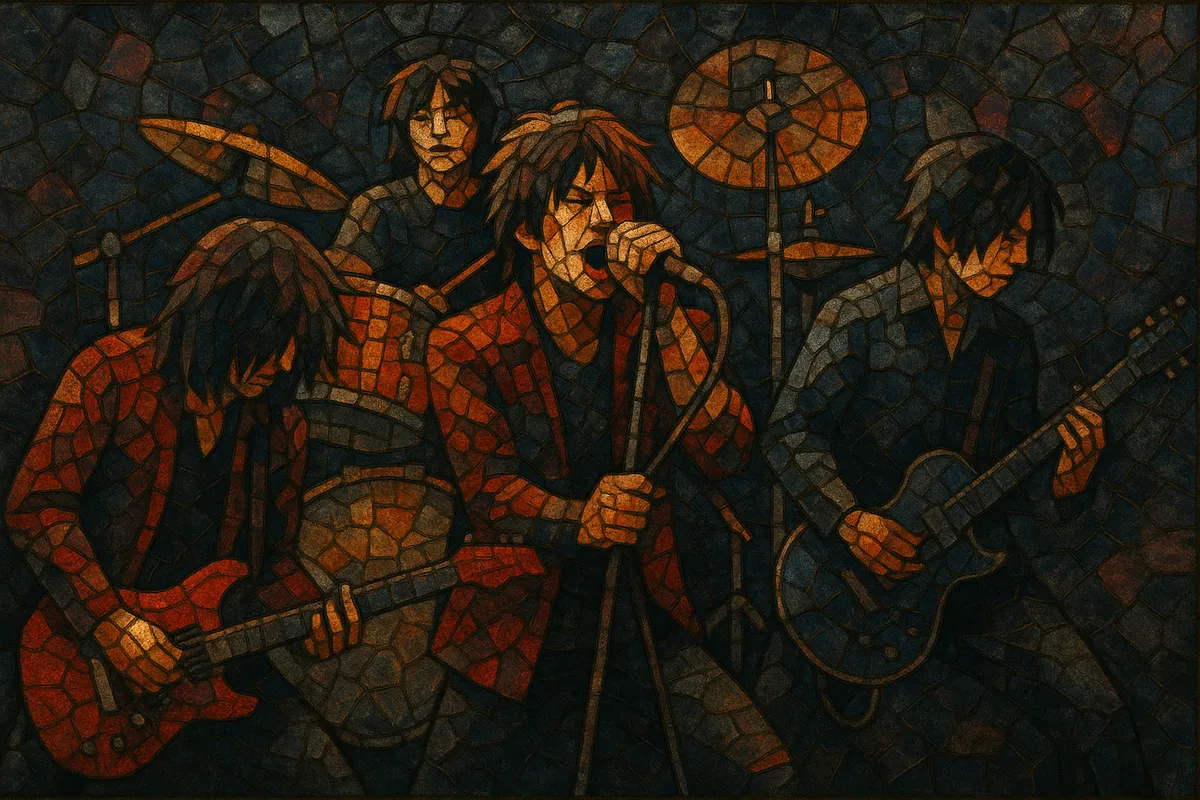J-rock (Japanese rock) is the umbrella term for rock music created in Japan, spanning everything from classic rock, punk, and metal to alternative, indie, and progressive strains.
It blends Western rock instrumentation and songcraft with Japanese melodic sensibilities, crisp production, and lyrics primarily in Japanese (often mixed with some English phrases).
Typical features include hook-forward choruses, expressive guitar leads, tight rhythm sections, and dynamic arrangements that can pivot from delicate verses to big, anthemic refrains.
Because of Japan’s media ecosystem, J-rock frequently intersects with anime, TV dramas, and video games, which helps bands reach mainstream audiences while retaining a band-centric, live-performance identity.
Although stylistically diverse, J-rock commonly emphasizes memorable melodies, emotional catharsis, and precise musicianship, with influences ranging from British Invasion and classic rock to punk/new wave, progressive rock, and heavy metal.
J-rock’s roots trace to the mid-1960s “Group Sounds” era, when Japanese youth bands absorbed American rock and roll, surf, and British Invasion styles. Acts modeled themselves on The Beatles and The Ventures, translating electric-guitar-driven energy into a Japanese context and laying the foundation for a band-centric rock culture.
In the 1970s, Japanese rock diversified into folk rock, hard rock, progressive rock, and early heavy metal. By the 1980s, new wave, glam aesthetics, and a burgeoning metal scene (including the visually bold visual-kei movement) pushed J-rock into more theatrical and technically ambitious territory, while studio craft and pop songwriting grew increasingly sophisticated.
The 1990s saw a boom of chart-topping bands and a full mainstream embrace of band sounds. Groups combined alternative rock and power-pop hooks with meticulous production, leading to massive album sales and arena tours. Media tie-ins with television and anime further amplified reach, cementing J-rock as a dominant force in Japanese popular music.
With expanding anime exports and online platforms, J-rock found overseas audiences. Bands toured internationally, and anime theme songs introduced rock bands to global listeners. Subgenres flourished—from punk-leaning youth rock to technical prog and metal hybrids—while labels and festivals supported a robust live circuit.
Streaming, social media, and continued synchronization with anime, films, and games sustain J-rock’s international profile. The style remains diverse and adaptive, integrating modern production techniques while preserving a core emphasis on melody, musicianship, and dynamic, chorus-driven songwriting.
Use a rock band setup: two electric guitars (one rhythm, one lead), electric bass, drum kit, and often keyboards for pads or hooks. Aim for clean-to-crunchy rhythm tones and lyrical, singing lead guitar with melodic motifs and tasteful bends.
Prioritize strong, singable melodies with memorable chorus hooks. Write diatonic progressions in major or minor keys and add color via modal interchange (borrow bVI, bVII, or iv), secondary dominants, and occasional key changes (a classic up-key final chorus is common). Japanese pentatonic flavors or Yo/In scale gestures can subtly localize the melodic language.
Keep grooves tight and dynamic. Verses often sit in steady 4/4 with syncopated rhythm guitar, while pre-choruses build tension (tom patterns, rising hits) into a wide, driving chorus. Use energetic but controlled drum fills to mark transitions; double-time or half-time shifts can raise intensity.
Common structures: Intro–Verse–Pre–Chorus–Verse–Pre–Chorus–Bridge–Solo–Final Chorus. Arrange with clear dynamic arcs—lighter textures in verses (clean guitar arpeggios) and full-band impact in choruses (layered guitars, vocal doubles). A short, melodic guitar solo that quotes or develops vocal motifs is effective.
Vocals are typically expressive, with clear diction and emotional delivery. Write lyrics in Japanese (sprinkling English catchphrases is common) about youth, longing, perseverance, or introspection. Stack harmonies and double the lead in choruses for lift; strategic backing "oohs/ahhs" reinforce hooks.
Pursue polished, radio-ready mixes: tight low end (kick–bass lock), bright but smooth guitars, and forward vocals. Layer rhythm guitars L/R for width; add chorus/delay on clean parts and tasteful reverb on vocals. For anime or drama tie-ins, craft a dramatic intro and a chorus that lands within the first minute.


